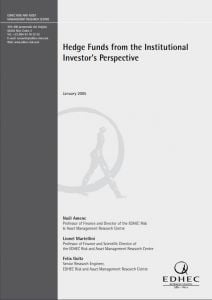

Hedge Funds from the Institutional Investor’s Perspective
As a consequence of entering a more mature stage, the hedge fund industry has extended its investor base to institutional investors, who are now faced with a large number of product offerings including not only single hedge funds, but also funds of funds and, more recently, investable indexes. Although the existing literature seems to concur on the interest of hedge funds as valuable investment alternatives, there still remain a large a large number of institutional investors who wonder whether they should invest in hedge funds, and more importantly, how they should do it. In order to address these questions, this paper looks at the risk factors in hedge fund strategies and attempts to assess the diversification benefits investors can expect from allocating part of their wealth to hedge funds.
Author(s):
Summary:
As a consequence of entering a more mature stage, the hedge fund industry has extended its investor base to institutional investors, who are now faced with a large number of product offerings including not only single hedge funds, but also funds of funds and, more recently, investable indexes. Although the existing literature seems to concur on the interest of hedge funds as valuable investment alternatives, there still remain a large a large number of institutional investors who wonder whether they should invest in hedge funds, and more importantly, how they should do it. In order to address these questions, this paper looks at the risk factors in hedge fund strategies and attempts to assess the diversification benefits investors can expect from allocating part of their wealth to hedge funds.
Register to download PDF
Register/Log in| Type : | Working paper |
|---|---|
| Date : | 18/01/2005 |
| Keywords : |
Asset-Liability Management |

